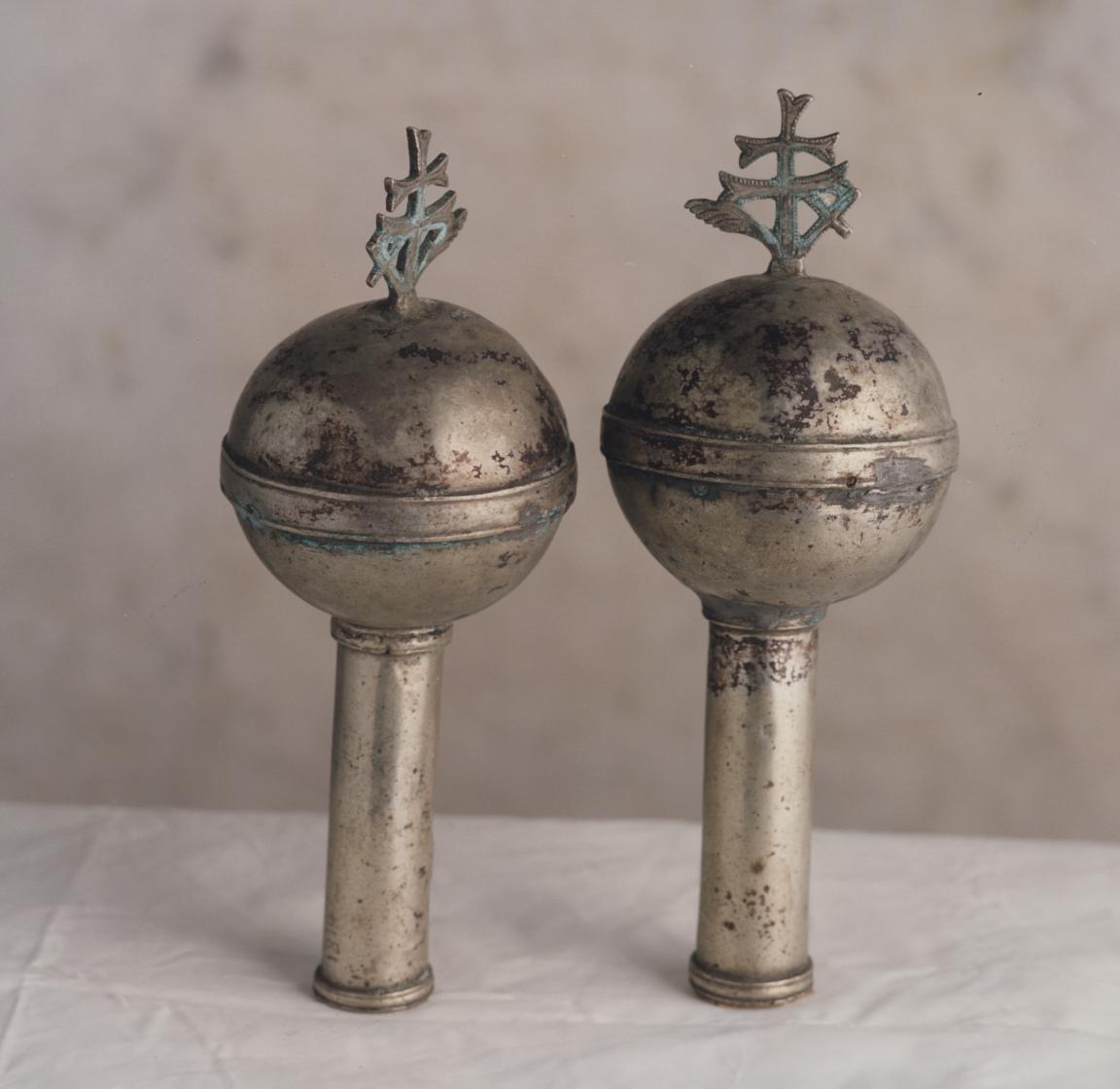The hypogeum, partly a natural cave, partly carved into the rock, is located under the church of Santa Restituta in the historic district of Stampace.
Archaeological research has shown that in the late Punic age, the hypogeum was a quarry of limestone blocks. Later, as would appear from the discovery of votive objects on site, it would become a place of worship. The hypogeum was then reused as a warehouse for amphorae until the first century AD; then it was abandoned for twelve centuries, when it was used again as a place of worship. In 1263, the archbishop of Pisa, Federico Visconti, visited Cagliari. Another moment of abandonment followed, caused by the greater attendance of the nearby new churches of Sant'Anna and San Francesco. At the beginning of the seventeenth century, the material that had filled it was rediscovered and emptied.
The hypogeum consists of a large central environment connected to the outside by two staircases dug into the rock. The walls were decorated with paintings, of which only that of Saint John the Baptist, dated to the 13th century, is preserved. The marble statue of Santa Restituta is placed on the main altar, while the simulacra of Saints Justina and Enedina was in the lower altar.
The statues guided the search for relics, which was crowned with success in 1614, when the lower altar was destroyed to find the sacred remains. Later, the then bishop of Cagliari, Francisco Desquivel, ordered embellishment work with the raising of the altar and the creation of three niches: the central one housed the relics of the four Saints and the statue of Restituta; the side ones probably housed the simulacra of Eusebio, bishop of Vercelli, and Eusebia abbess, traditionally considered children of Saint Restituta. In 1620, after the discovery, under the floor of the crypt, of other presumed holy bodies, the room was further decorated by adding the large altar of the chapel in the background, delimited by a large arch adorned with fioroni and diamond tips.
During the Second World War, the hypogeum was reused by Cagliari as a refuge to escape the bombing. The relics of Santa Restituta were hidden in the church of Sant'Anna to protect them from bombing. Memory of them was lost and they were recently found in 1997 by Mauro Dadea in a disbanded environment, inside a seventeenth-century wooden urn covered with cloth and bearing a cartouche that identifies them as relics of Saint Restituta.
History of excavations
The first investigations were conducted in the seventeenth century in search of relics. At the end of the seventies of the last century, the Superintendence for Archaeological Heritage for the provinces of Cagliari and Oristano promoted a campaign to excavate and restore the crypt.
Bibliography
G. Spano, Guida della città e dintorni di Cagliari, Cagliari, A. Timon, 1861, pp. 137-139;
A. Saiu Deidda, "Documenti e notizie sulla chiesa sotterranea di Santa Restituta a Cagliari", in Archivio Storico Sardo, XXXIV, 1983, pp. 126-141;
Domus et Carcer Sanctae Restitutae. Storia di un santuario rupestre a Cagliari, Cagliari, 1988;
M. Dadea, "Le iscrizioni della cripta di Santa Restituta a Cagliari (scavi 1607-1614)", in La Sardegna paleocristiana tra Eusebio e Gregorio Magno. Atti del Convegno Nazionale di Studi, Cagliari, pp. 81-136;
M. Dadea, "La cripta di Santa Restituta", in Cagliari: itinerari urbani tra archeologia e arte, Cagliari, 1999, pp. 46-49;
A.M. Colavitti, Cagliari, collana "Città antiche in Italia", Roma, 2003, p. 48.
Structure category: archaeological area or park
Content type:
Archaeological complex
Archaeology
Usability: Open
Province: Cagliari
Common: Cagliari
Macro Territorial Area: South Sardinia
POSTAL CODE: 09124
Address: via Sant'Efisio, 14
Telephone: +39 366 2562826
E-mail: info.beniculturalicagliari@gmail.com orientare@orientare.it
Website: www.beniculturalicagliari.it/it/beni/14/cripta-di-santa-restituta
September 22nd - March 21
Tuesday - Wednesday - Thursday - Friday - Saturday - Sunday
9:00 AM - 4:00 PM
March 22nd - September 21
Tuesday - Wednesday - Thursday - Friday - Saturday - Sunday
10:00 AM - 2:00 PM
Tuesday - Wednesday - Thursday - Friday - Saturday - Sunday
3:00 PM - 6:00 PM
Access mode: For a fee
Tickets :
Update
Services
Guided tours
Where is it
Images

Author : ambito tardo antico/ ambito altomedievale

Year : 1814
Results 2 of 120793
View AllTexts
Video
Audio
Comments